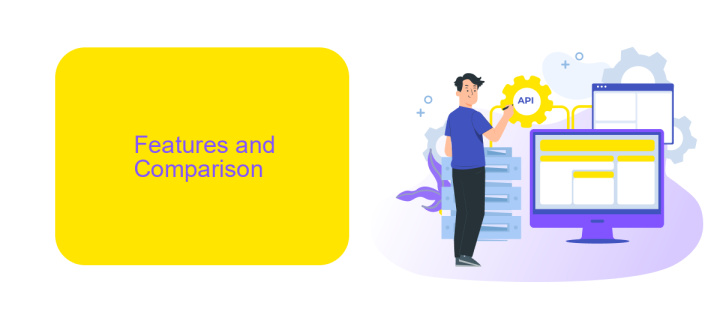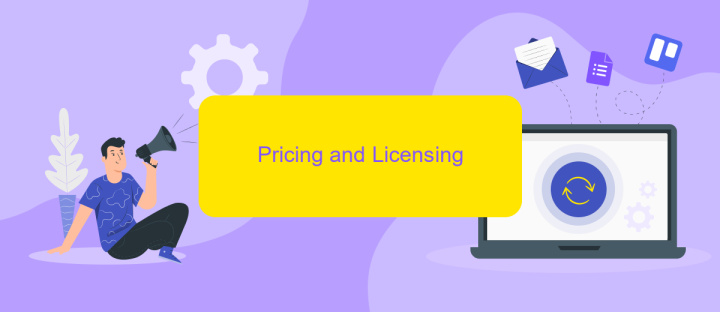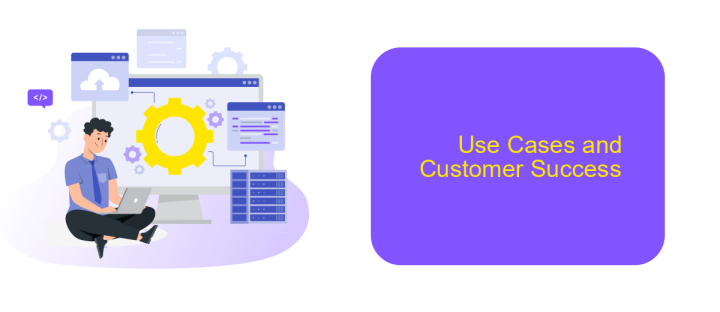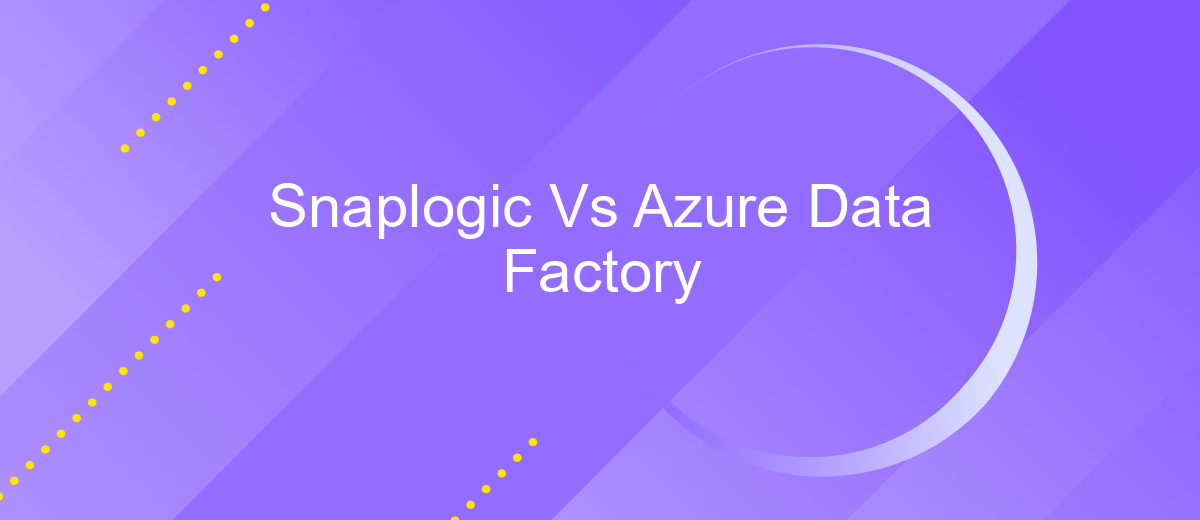Snaplogic Vs Azure Data Factory
In the rapidly evolving landscape of data integration and automation, choosing the right tool is crucial for businesses aiming to streamline their operations. This article delves into a comparative analysis of SnapLogic and Azure Data Factory, two leading platforms in the field. By examining their features, capabilities, and performance, we aim to provide insights that will help organizations make informed decisions.
Introduction
In the evolving landscape of data integration and automation, choosing the right platform is crucial for businesses aiming to streamline their data workflows. Snaplogic and Azure Data Factory are two prominent tools that offer robust solutions for data integration, ETL (Extract, Transform, Load) processes, and data pipeline automation. These platforms are designed to handle complex data tasks, but they come with distinct features that cater to different business needs.
- Snaplogic provides a user-friendly interface with a focus on ease of use and rapid deployment.
- Azure Data Factory offers deep integration with the Microsoft Azure ecosystem, making it a powerful choice for enterprises already invested in Azure services.
- Both platforms support a wide range of data sources and destinations, ensuring flexibility and scalability.
While both Snaplogic and Azure Data Factory are capable of handling extensive data integration tasks, the choice between them often depends on specific business requirements and existing technology stacks. Additionally, tools like ApiX-Drive can complement these platforms by offering seamless integration capabilities, further enhancing the efficiency of data workflows. Understanding the strengths and limitations of each platform is essential for making an informed decision that aligns with your organization's goals.
Features and Comparison

Snaplogic and Azure Data Factory are powerful tools for data integration and ETL processes, each offering unique features to cater to various business needs. Snaplogic stands out with its user-friendly interface and extensive library of pre-built connectors, making it accessible for users with minimal coding skills. It supports real-time data integration, which is crucial for businesses requiring up-to-the-minute data insights. On the other hand, Azure Data Factory excels in scalability and seamless integration with other Azure services, making it an ideal choice for enterprises already invested in the Microsoft ecosystem.
When comparing the two, Snaplogic offers quicker setup times and ease of use, which can be further enhanced by integration services like ApiX-Drive, providing automated workflows and streamlined data synchronization. Azure Data Factory, however, offers more robust data transformation capabilities and advanced scheduling features. Both platforms support a wide range of data sources, but the choice between them often depends on specific business requirements, such as the need for real-time data processing or deep integration with existing cloud infrastructure.
Pricing and Licensing

When comparing SnapLogic and Azure Data Factory, pricing and licensing are critical factors to consider. Both platforms offer flexible pricing models, but they cater to different needs and budgets.
- SnapLogic: SnapLogic offers a subscription-based pricing model, which is typically more predictable for budgeting. The cost is influenced by factors such as the number of pipelines, data volume, and additional features. SnapLogic also provides a free trial to evaluate its capabilities.
- Azure Data Factory: Azure Data Factory uses a pay-as-you-go pricing model, which can be more cost-effective for smaller projects or variable workloads. The pricing is based on activities such as pipeline orchestration, data movement, and data transformation. Azure also offers a free tier with limited capabilities for new users.
For businesses looking to streamline their data integration processes without heavy upfront costs, services like ApiX-Drive can be a valuable addition. ApiX-Drive offers a user-friendly interface and a variety of integration options, making it easier to connect different systems and automate workflows efficiently. This can complement either SnapLogic or Azure Data Factory, depending on your specific needs.
Use Cases and Customer Success

SnapLogic and Azure Data Factory are powerful tools for data integration and automation, each with unique use cases. SnapLogic is often favored for its intuitive interface and rapid deployment, making it ideal for businesses looking to quickly integrate diverse data sources. Azure Data Factory, on the other hand, excels in handling complex data workflows and is deeply integrated with other Azure services, making it a strong choice for enterprises already invested in the Microsoft ecosystem.
Both platforms have demonstrated significant customer success across various industries. For instance, SnapLogic has been instrumental in helping retail companies streamline their supply chain data, while Azure Data Factory has enabled financial institutions to enhance their data analytics capabilities.
- SnapLogic: Retail supply chain optimization, healthcare data integration, and real-time analytics.
- Azure Data Factory: Financial data processing, large-scale data migration, and IoT data management.
For businesses seeking a more straightforward integration solution, services like ApiX-Drive can further simplify the process. ApiX-Drive offers a user-friendly platform to connect various applications and automate workflows without extensive coding knowledge, complementing the capabilities of both SnapLogic and Azure Data Factory.
Conclusion
In conclusion, both SnapLogic and Azure Data Factory offer robust data integration and ETL capabilities, each with its own set of strengths. SnapLogic excels in its user-friendly interface and rapid deployment, making it an ideal choice for organizations looking to streamline their data processes quickly. On the other hand, Azure Data Factory is deeply integrated with other Azure services, providing a seamless experience for enterprises already invested in the Microsoft ecosystem.
Ultimately, the choice between SnapLogic and Azure Data Factory will depend on your specific business needs, existing infrastructure, and long-term data strategy. For those seeking an additional layer of flexibility, ApiX-Drive can be a valuable tool to further enhance your integration processes, offering easy setup and a wide range of supported applications. Carefully evaluating these factors will help you make an informed decision that aligns with your organizational goals.
- Automate the work of an online store or landing
- Empower through integration
- Don't spend money on programmers and integrators
- Save time by automating routine tasks
FAQ
What is the primary difference between SnapLogic and Azure Data Factory?
Which tool is better for real-time data integration?
Can both SnapLogic and Azure Data Factory handle large-scale data transformations?
How do SnapLogic and Azure Data Factory support hybrid and multi-cloud environments?
Is it possible to automate and integrate various applications using these tools?
Apix-Drive is a universal tool that will quickly streamline any workflow, freeing you from routine and possible financial losses. Try ApiX-Drive in action and see how useful it is for you personally. In the meantime, when you are setting up connections between systems, think about where you are investing your free time, because now you will have much more of it.


